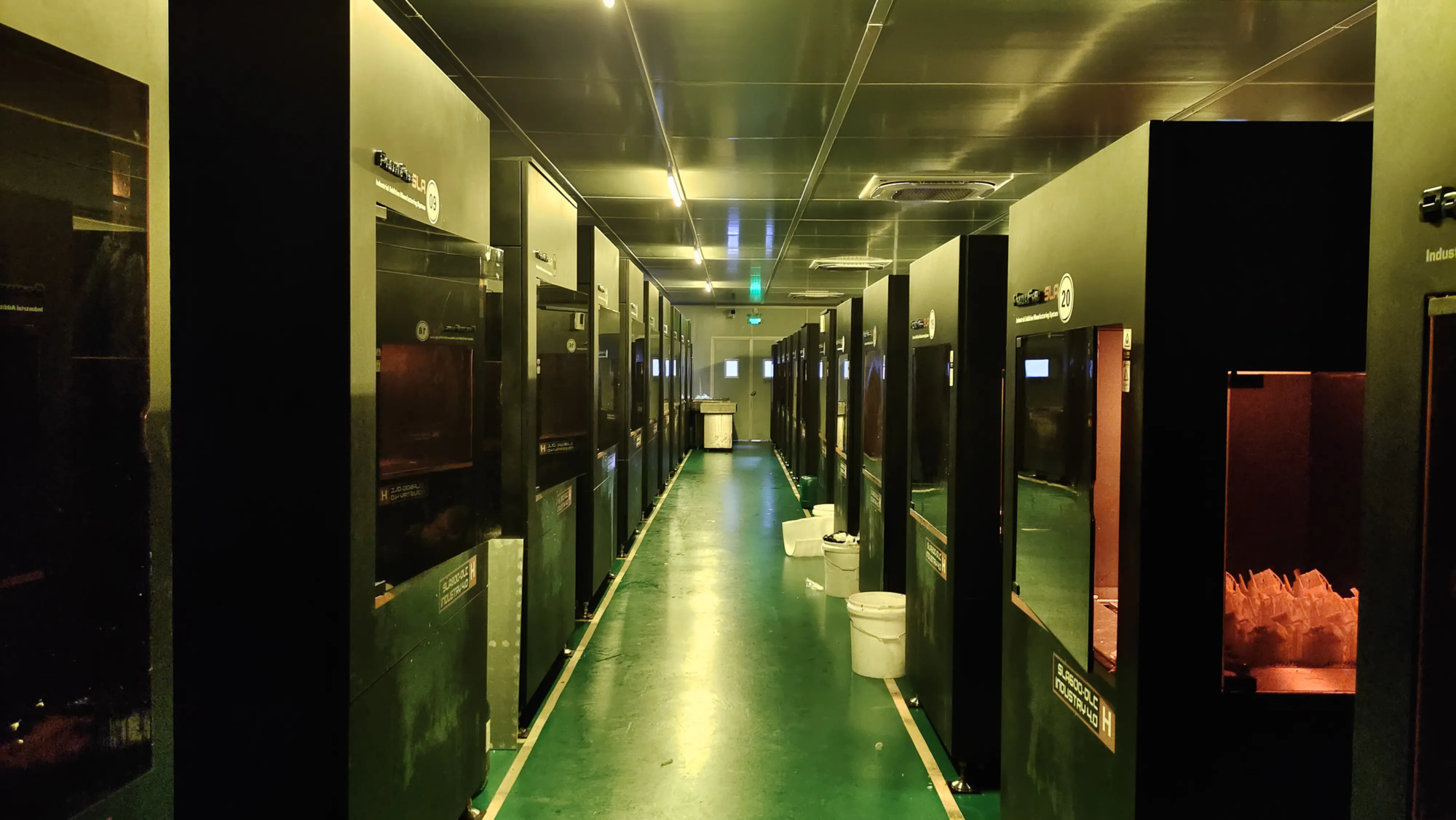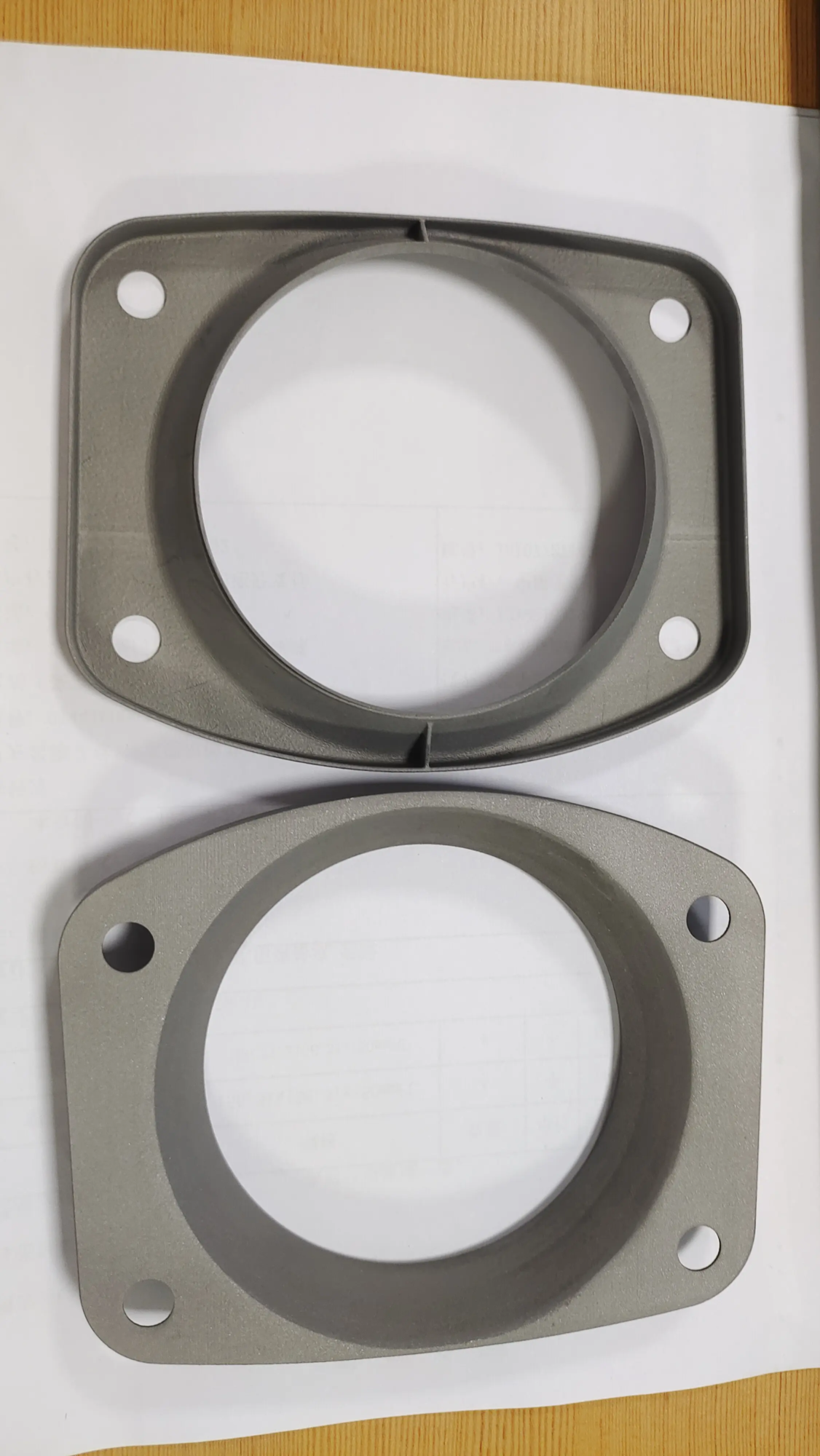3D printed dustproof accessories: essential components for cleaner, safer and higher quality prints
In a rapidly developing world of additive manufacturing, achieving consistent high-quality prints requires not only consistent attention to printers and raw materials. One often overlooked but crucial aspect is effective dust management. Dust and fine particles generated during the printing process (especially with materials such as resin, nylon or composite silk) or by treating raw powder in metal AM can cause damage to equipment performance, printing quality and operator safety. This is a professional place 3D printing dustproof accessories Become essential. At Greatlight, as a leader in the field of specialized rapid prototyping and manufacturing, we understand the profound impact of proper dust control on the overall additive manufacturing workflow.
Why can’t dust management be ignored in 3D printing
Dust in 3D printing environments poses some major challenges:
- Component wear and damage: Fine abrasive particles can penetrate sensitive printer components – linear guides, bearings, lead screws, and especially extruder gears. This can cause accelerated wear, increase friction, jam and expensive repairs or replacements.
- Eclectic printing quality: Dust settles on the printing bed, which can lead to a layer of poor adhesion. Dust accumulated on the filaments entering the hot end can cause nozzle clogging without loss and surface defects such as pitting or zits. In powder-based systems such as SLS or SLM, stray particles contaminate fresh powder layers.
- Material pollution: Dust contamination of stored filaments or powders changes its properties and leads to printing inconsistency or construction failure.
- Fire hazards: Certain fine dust particles (metal powders, wood composites, etc.) can be combustible and create a serious fire risk in the work area.
- Operator’s health and safety: Particles in the air constitute respiratory hazards (silica dust, sensitization of resin particles, etc.), which may cause skin or eye irritation. A clean working environment with dust extraction is essential for occupational safety and regulatory compliance.
- Cleaner post-treatment: During post-processing phases (such as polishing, painting or inspection), removing dust at the source can greatly reduce the burden.
What are 3D printed dustproof accessories and how do they work?
3D printed dustproof accessories are specialized adapters, housings, pipes and accessories designed to seamlessly integrate dust extraction systems with specific areas within a specific 3D printer or printing ecosystem. They act as a critical interface between dust generation points (such as extruder inlets, printing bed fence exhaust, powder processing station, grinding zone) and vacuum sources (shop vacuum, dedicated HEPA dust extractor or studio extraction system).
- Common types and functions:
- Nozzle/sensor shield and entrance guard: Protect sensitive areas around the heat station and automated bed upgrade sensors from dust accumulation while allowing access. Integrated vacuum ports are usually included.
- Filter Dust Filter: Install the spool outlet or near the extruder inlet with foam or felt inserts to wipe the wire box before entering the extruder transmission and hot table. It is crucial for molars or sticky filaments.
- Case exhaust port: Airtight accessories designed for printing housings (especially critical for ABS, ASA or materials requiring high ambient temperatures) to connect extractions to prevent smoke and particles from escaping into the room.
- Powder treatment system accessories: Specialized, usually custom designed hopper covers, transmission port adapters, and glove box connections used in SLS or metal SLM printing to capture wandering powder during processing, sieving and recycling. Need to be compatible with powder characteristics and strict safety standards.
- Accessories for adaptive tools: Adapters designed to connect vacuum hoses directly to power tools (such as rotary tools, sanders, grinders) used during post-processing of printed parts.
- PC fan tube (conductive): The use of conductive materials can prevent static emissions of electronic devices and potential ignition sources, and can safely direct potentially combustible dust to potentially combustible dust to prevent static emissions.
Gremight Advantages: Precise Solutions to Meet Your Dust Control Requirements
At Greatlight, we take advantage of the core advantages of advanced additive manufacturing and rapid prototyping to provide special dust fitting solutions with different advantages:
- Advanced Metal 3D Printing Function (SLM): Our fleet of industrial grade selective laser melting (SLM) metal 3D printers enable us to produce dust accessories through powerful professional materials:
- High temperature plastics (PPSU, PEKK, ULTEM): Ideal for areas where thermal stability is critical to the heat table or exhaust vents. Better than common thermoplastics.
- Metal alloy (stainless steel 316L, aluminum, titanium): Provides unparalleled durability, chemical resistance (critical for resin or solvent smoke), fire resistance (critical for metal powder safety) and even in the most demanding environments. Ideal for industrial setup and critical powder handling operations.
- Static materials: The key to the accessories for handling combustible dust (metal powder, fine polymer).
- True customization and quick iteration: Ready-to-shelf accessories often require compromise. Our fast prototyping expertise enables us to design, prototypify, test and manufacture accessories Completely used to for you:
- Specific printer model: Make sure to suit your extruder model, shell design or powder handling station.
- Professional Application: Whether it is unique tool connections, complex pipeline requirements, or integration with proprietary systems.
- Material Compatibility: Select the best material based on dust/powder type, environmental conditions and required durability.
- Vacuum source compatibility: Design port sizes and configurations to match your extraction device’s suction profile.
- Integration post-processing: We won’t stop printing. Our comprehensive one-stop service can handle all necessary completions:
- clean: Thoroughly remove any residual support material, powder or process chemicals.
- Processing: Precise mounting hole drilling/tap or finishing the critical sealing surface for perfect vacuum integrity.
- Internal polishing: Essential for preventing clogged powder flow accessories.
- Surface treatment: Options include bead blasting, anodizing (for aluminum) or passivation (for stainless steel) for enhanced appearance, corrosion resistance or easier cleaning.
- Speed and Agility: As a professional rapid prototyping expert, we excel in providing prototype iteration and production runs quickly. Need a novel solution to test? We can turn it around quickly. Do reliable, durable accessories needed for mass production? We handle it efficiently.
Beyond Prevention: The Benefits of Professional Dust-proof Accessories
Investing in carefully designed, reliable dust accessories brings tangible benefits:
- Extended device life: Protect expensive AM hardware from expensive wear and tear.
- Elevated printing consistency and quality: Eliminate dust-related printing defects and faults.
- Reduce downtime: Minimize printer clogs, clogs and unplanned maintenance.
- A safer working environment: Effectively contain harmful particulate matter and potentially explosive dust to ensure operator safety and OSHA/EU compliance.
- Material Savings: Prevent expensive specialty silk and powder contamination.
- Optimized production flow: Faster cleaning and more efficient post-processing.
in conclusion
Effective dust management is not a luxury in modern additive manufacturing; it is a basic requirement for operational efficiency, operator safety, product quality and equipment life. Common solutions are often insufficient, leaving vulnerabilities. Customized precisely designed 3D printed dust accessories are reliable, reliable solutions.
Greglight brings industrial-grade SLM metal 3D printing capabilities, unrivalled customization expertise, rapid prototyping agility, and a comprehensive finishing service to deliver precisely tailored dustproof accessories tailored to your unique machine, material and workflow challenges. We transform your dust management from ongoing problems to seamlessly integrated, efficient systems.
Ready to eliminate dust issues and raise your AM production standards? Leverage Greatlight’s expertise in advanced rapid prototyping. Contact us today to discuss your specific dust fitting requirements and discover how we offer higher filtering and precision parts – quickly and reliably manufactured at the best price.
FAQ: 3D printed dustproof accessories
Question 1: Can’t I just use the universal vacuum hose attachment to extract dust on the printer?
A: While universal accessories provide basic suction, they rarely fit into specific printer components. Accessories that don’t fit or leak can greatly reduce extraction efficiency and suck empty from unexpected places, thereby bypassing the dust source. Custom fittings provide the airtight seal you need to maximize dust capture.
Q2: Which material is best for filament dust filter housing?
A: For most FFF/FDM applications, powerful engineered thermoplastics such as PETG, ABS or PC are common. However, for environments near a heat table or harsh settings, Greglight can manufacture filters from high temperature polymers such as PPSU or PEKK, and even light metals such as aluminum, providing excellent heat resistance and life.
Q3: Do plastic printers need metal dustproof accessories?
A: Not always, but they have great advantages: extreme durability, no risk of melting near heat sources, chemical resistance to cleaning solvents, inherent fire resistance, and the risk of ease of cleaning/disinfection. They are highly recommended for use in industrial or high-volume settings. For a typical home/amateur printer, strong plastic is usually enough if carefully designed.
Q4: Can Greatlight handle metal powder accessories in our SLM system?
Answer: Absolute. Metal powder treatment requires the highest safety standards due to flammability and health risks. Greatlight specializes in the production of custom metal (stainless steel, aluminum, titanium) dustproof accessories, designed for powder processing stations, sieves and glove boxes. We use static heat dissipation materials/processes when needed and provide a critical internal polish for smooth powder streams.
Q5: You can usually produce custom dust prototypes and produce parts quickly?
Answer: Speed is our core capability. We can usually use the quick prototyping feature to reverse the functional prototype in a few days. For production batches of customized metal or polymer accessories, the schedule depends on complexity and quantity, but we usually offer faster than traditional manufacturing methods in 1-3 weeks.
Question 6: How to provide specifications for customized dust accessories?
Answer: The best way is:
- Determine the exact point where the dust needs to be extracted (photo/video help).
- Specify your 3D printer model or the device involved.
- Detailed description of the vacuum source (hose diameter, connector type).
- Describe the main dust/powder type.
- Overview of any environmental factors (e.g., high temperature).
We will work closely with you to perfect the design based on this input.





